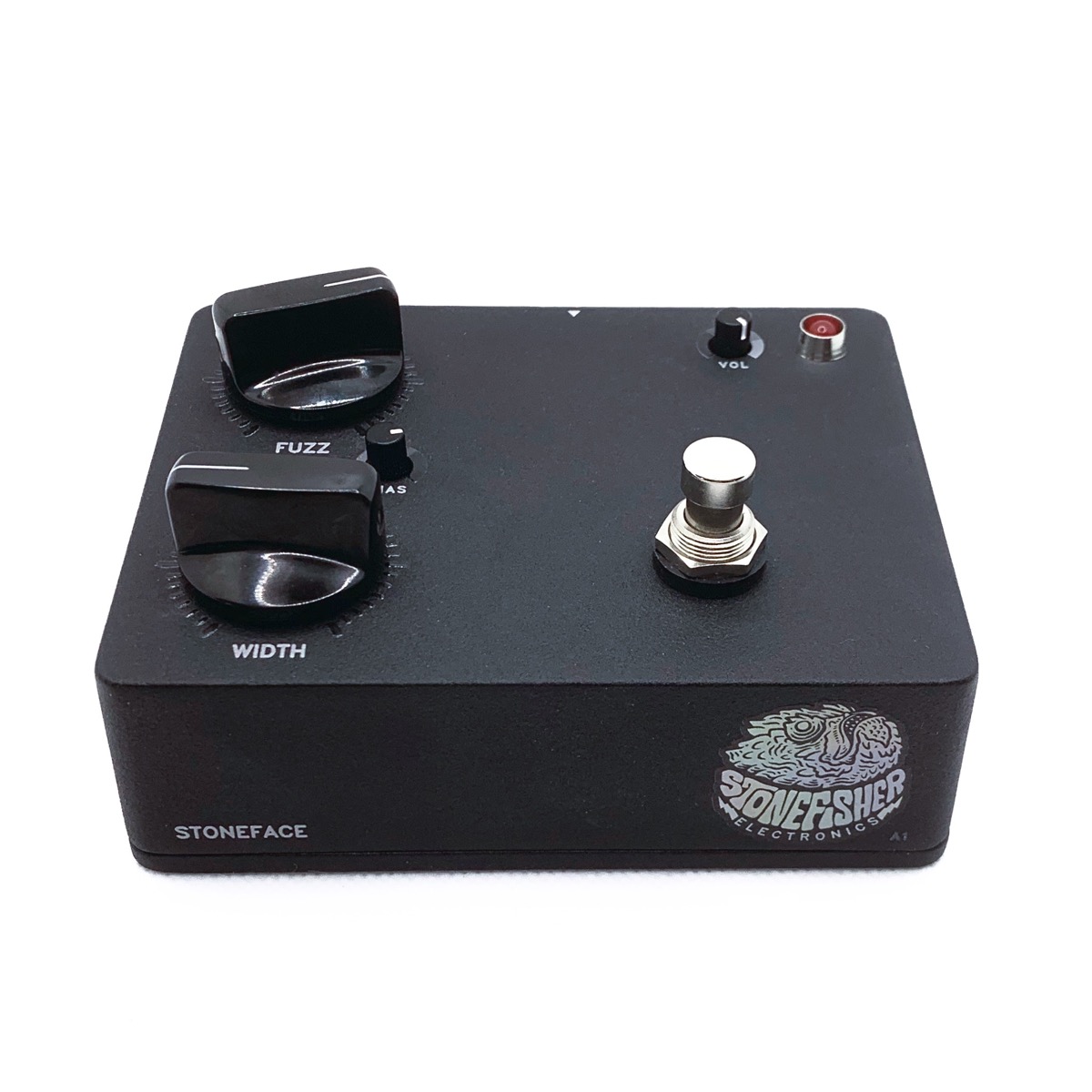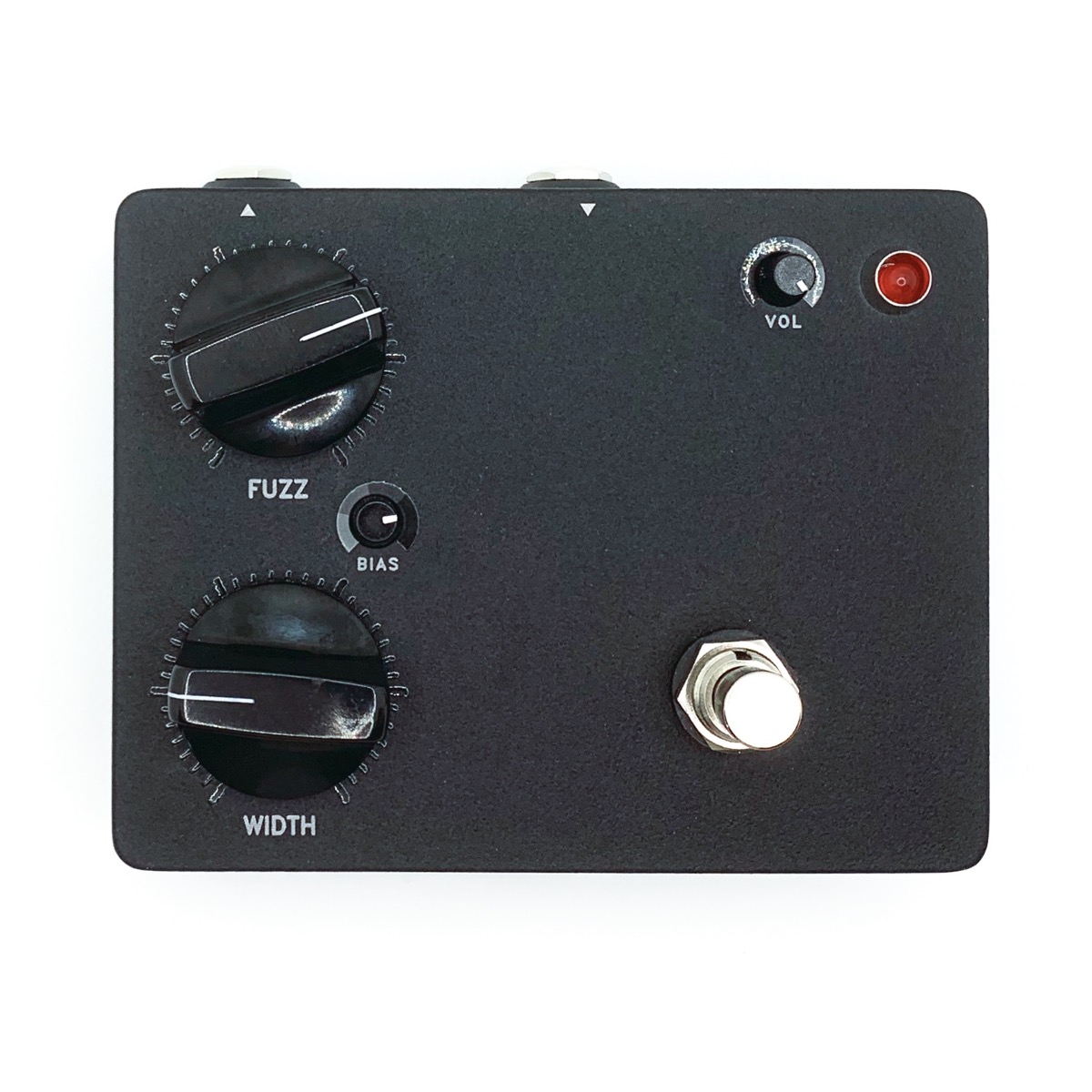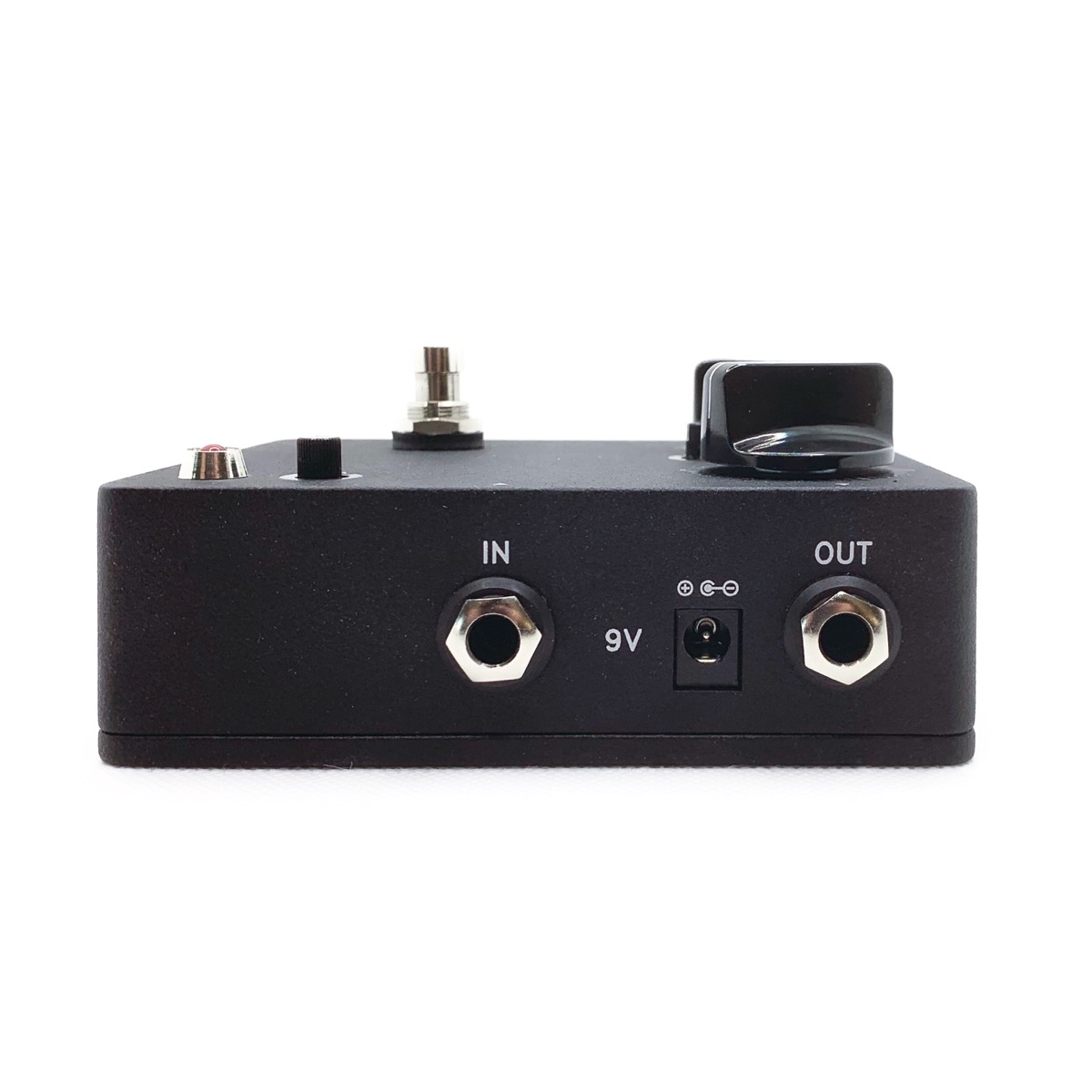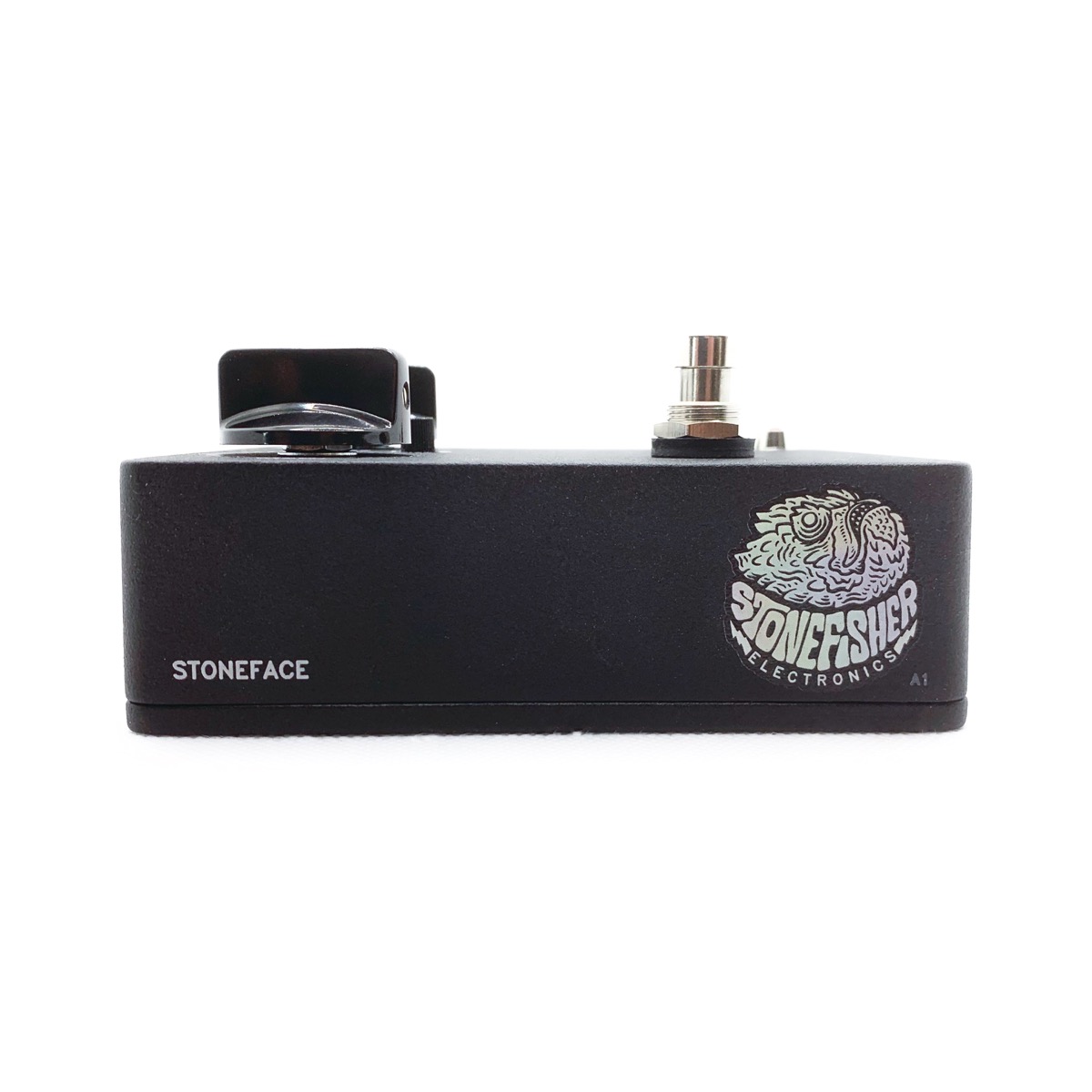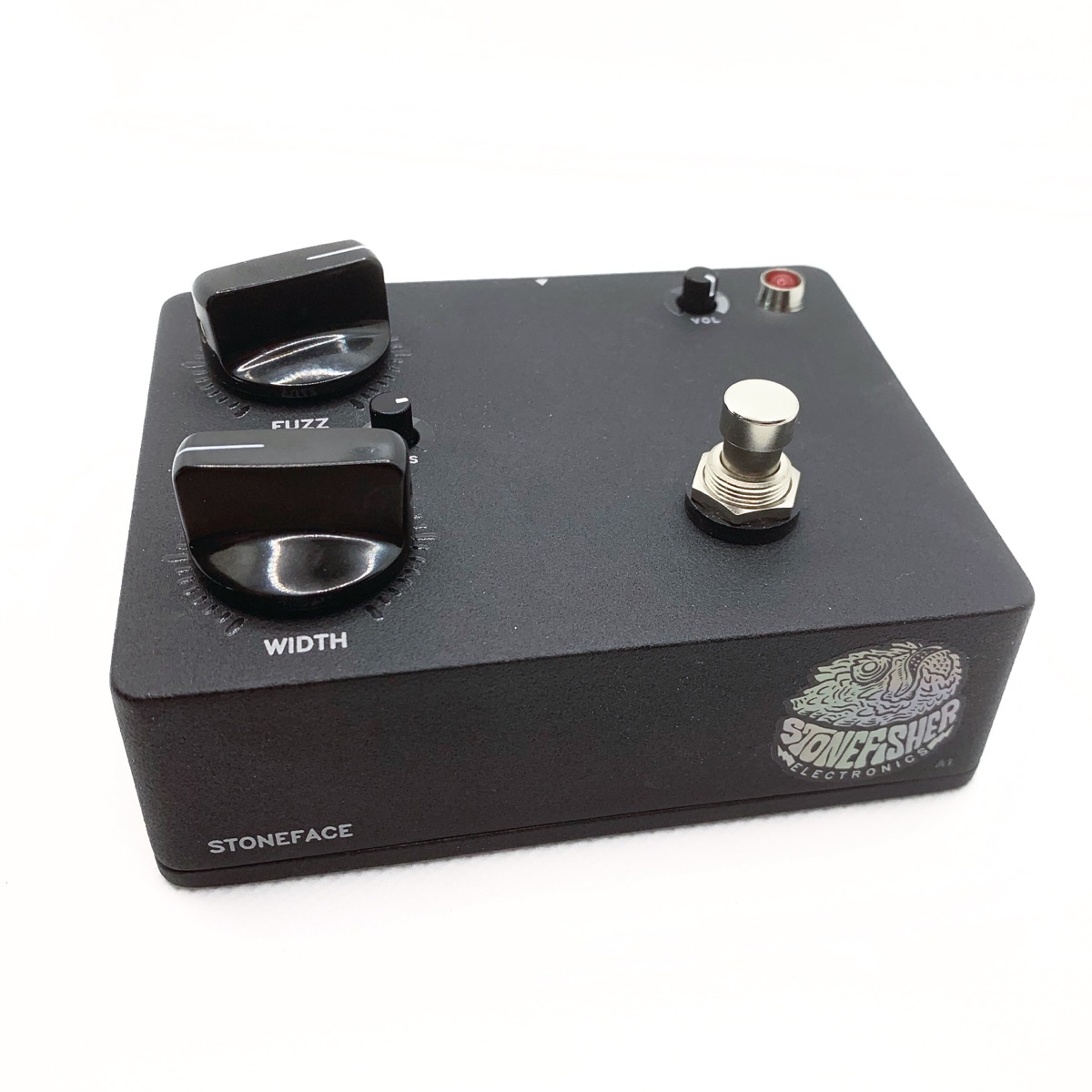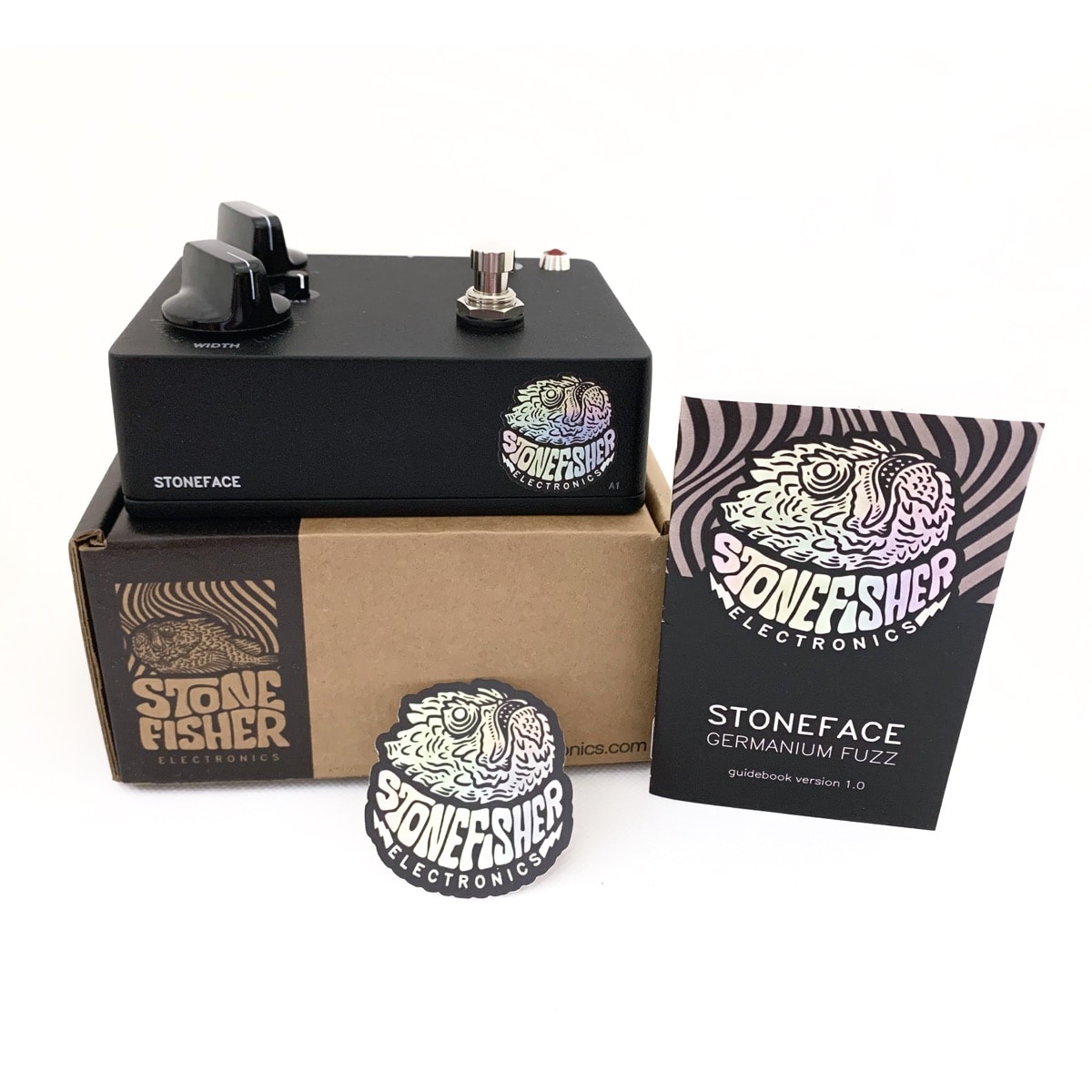

Mailing List Sign-up
Sign up for a heads up on product availability, discounts, and other fun stuff.
NO spam, NO nagging, and NO FOMO marketing - I promise.
STONEFACE
Making a debut at the 2025 Brooklyn Synth & Pedal Expo
Come say hi and demo the STONEFACE in person at the 2025 Brooklyn Synth & Pedal Expo on October 18th & 19th. Inventory will be on hand and available at the show (and online thereafter).
Downloads
About this pedal
The STONEFACE is a good ol', big ol' two-transistor fuzz. As the name suggests (STONEFACE), the circuit in the box is similar to a classic Fuzz Face circuit. This pedal uses an uncommon recipe of new old stock transistors, resistors, and capacitors on purpose-built PCBs to deliver exhilarating, rich, classic fuzz tones from vintage guts.
From subtle grit to throbbing fuzz, glassy cleanup to searing fuzz lead - the STONEFACE is a big mother with tons of gain, grit, gnarl, and fuzz on tap.
Specs
Power: 9V center negative (boss-style), 2.1mm barrel jack or 9V battery (internal clip included). Battery is disconnected when your instrument cable is removed from the input jack OR whenever an external power supply is used. For best performance use a high quality, isolated power supply or a 9V battery.
Instrument IN: 1/4" TS (mono)
Instrument OUT: 1/4" TS (mono)
Controls
FUZZ: This control is fairly straight forward. It's like a gain knob and the higher you turn it, the bigger and bolder the fuzz effect will be.
WIDTH: This is a sort of tone control. Dialed all the way up, you'll be sending a wide, full spectrum signal off to the 'fuzzing' part of the circuit. The beefiest, heaviest tones involve a fully cranked WIDTH knob - the idea being that more signal in equals more signal out. As you dial this knob down, you'll narrow the spectrum of signal that is sent off to fuzz and create a thinner, crispier tone. You may find that reducing the WIDTH allows for clearer chording and rhythm playing. Reducing WIDTH can be helpful when you want to fuzz but need to keep things tight. You might also find that reducing WIDTH works nicely to brighten up your tone when you have also reduced your FUZZ knob to 7/10 or less.
BIAS: This knob is an important control and can significantly affect the nature of the fuzz effect (as well as the loudness). With the knob turned fully up (10/10), you'll experience a smoother fuzzy distortion. This fully up position will be the least loud position of this knob (I refuse to call it 'quiet'). Loudness will increase as this knob is turned down and the fuzz quality will progress from smoother/woofier to a punchier, more prickly texture with harmonic content contributing in some contexts to a subtle octave effect.
Tip- Use this knob in conjunction with VOL to set a desired output level.
VOL: This controls the final overall output level from the pedal. As both the FUZZ control and the BIAS control will impact loudness, you will want to adjust this knob accordingly to ensure reasonable final output levels for whatever fuzz settings you choose. In other words, no matter how gnarly or subtle you choose to fuzz, use this knob to set the final output level you desire. I'm a 10/10 VOL type of guy - but to each their own.
More details, guidance on the internal configurations available, and gut shots can be found in the PDF guidebook.
